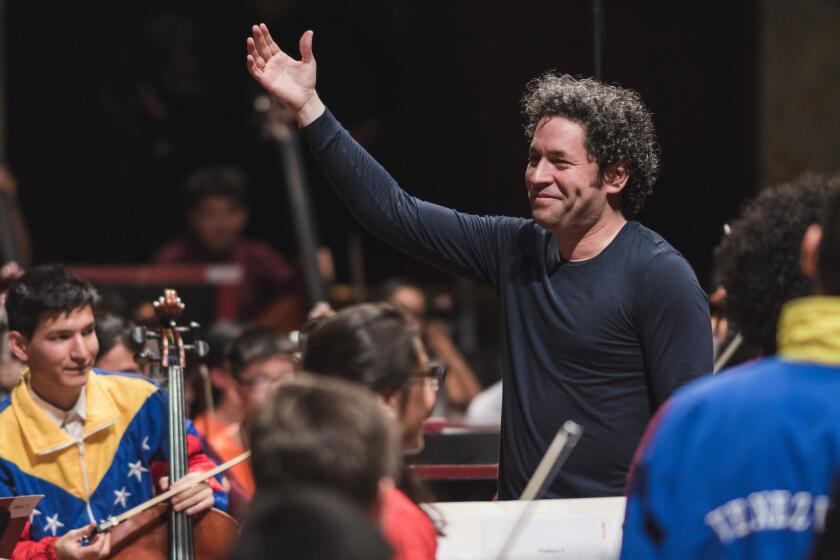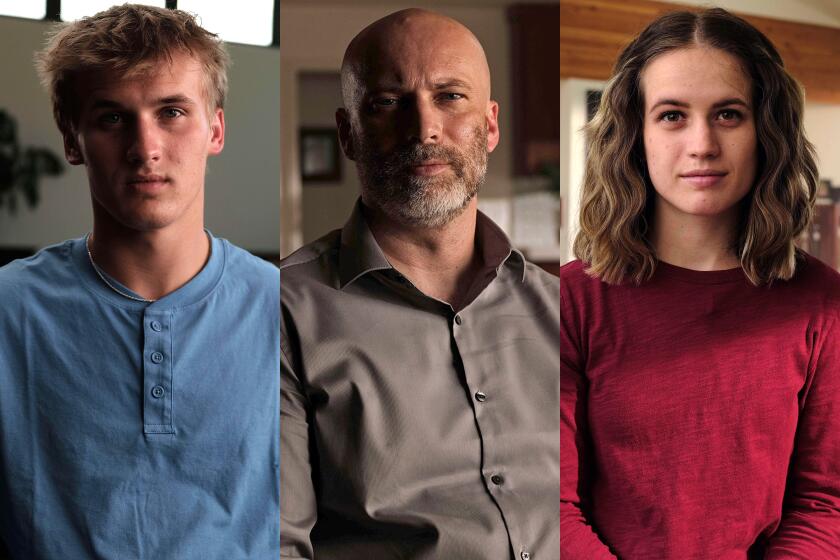Atmospheric ‘Stream . . . ‘ Moves With Symbolic Help
- Share via
The latest installment in an experimental project exploring the interaction of human consciousness and environmental forces, Oguri’s disarmingly poetic dance-theater epic “Stream . . . “ was the final event of the City of Los Angeles (C.O.L.A.) Fellowship series for local performing artists, Thursday at the Los Angeles Theatre Center.
Maintaining the earthy, butoh-based movement style and stark white-on-white color scheme of earlier segments, the plotless 65-minute quintet also reused a number of transparent plastic bags filled with water as a collective nature-symbol. But unlike more intimate segments in alternative spaces, this version fully exploited the scale and formality of theatrical space--and, particularly, the potential of lighting to achieve maximum atmosphere.
This time, 100 or so of the water bags hung onstage just over the heads of the performers. When, late in the piece, they began swinging the bags back and forth, and the lighting by Oguri and Chris Flores made the objects gleam magically, the movement of the bags caused the whole stage to shimmer, while serving as a metaphor for the rain, mist or snow that can transform the air with a life of its own.
In this moment, enhanced by a resourceful, water-dominated sound score, by Robert Scott and Arnie Saiki, that also incorporated a lengthy excerpt from “Tristan und Isolde,” the arc of “Stream . . . “ grew beyond the clenched intensity of butoh performance into a gorgeous abstract Expressionist action painting.
*
The links to the diversionary butoh-spectacles of the well-known Japanese company Sankaijuku seemed obvious, but Oguri managed to ground his pictorialism in a series of emotional encounters preceding his grand waterworks finale. The piece began with a solo by Boaz Barkan full of butoh’s deliberately disjointed limb displacements and facial contortions. But eventually--as his isolation yielded to a partnership with Sherwood Chen (the only relationship in the piece)--more liquid motion and a sense of emotional flow developed, in keeping with the work’s theme.
Initially functioning as ominous quasi-ushers, Asako Tsunoda and Jamie Burris eventually joined the group odyssey onstage, following the light with their colleagues--sometimes tightly clustered inside a bright circle and always conditioned by its steady, cyclical rhythms. Oguri himself played the agonized seeker, compulsively testing, questing and then vanishing along with everyone else as the empty stage and water bags darkened into a cold star scape: pitiless, meaningless and eternal.
More to Read
The biggest entertainment stories
Get our big stories about Hollywood, film, television, music, arts, culture and more right in your inbox as soon as they publish.
You may occasionally receive promotional content from the Los Angeles Times.










